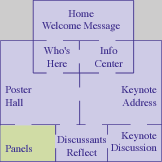Posted by:
David Pagni
Posted on: May 08, 2002 at 3:11 PM
Message:
I believe what Mark and Susan are alluding to is a partnership with respect to mathematics (science) education reform; a partnership in the real sense where the district and outside agency both bring something to the effort. The district needs to ante up in terms of having a support structure already in place, along with a commitment and vision of what it wants to achieve (reform, student achievement, teacher learning). The NSF took a small step in this direction with the LSCs by requiring the adoption of NSF materials. But more leverage than this is needed, e.g., long term (i.e., at least the length of the grant) agreements that the support structure will remain in the place, including support of administrators, etc. It is too easy because of district "politics" and administrator turn-over for interest and support to drop off or be redirected.There are two problems with asking districts to do this. First, districts always claim their budgets are tight--and reallocating funds to build a support structure it not a top priority, especially for the types of districts the NSF wants to target. Second, the external funds represent a small percentage of a district's operating budget, and may not be a good enough incentive effect commitment. This means the NSF may not reach the schools that it wants to reach. On the other hand, if districts ante up in this fashion, it increases the chances of a good fit between the partners with both having a clear idea of what the the work is.
|


